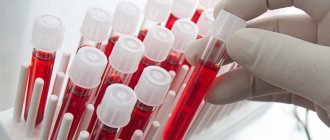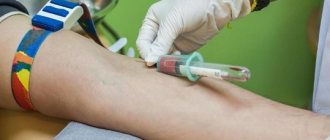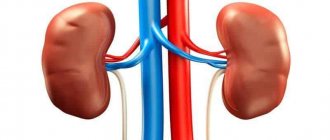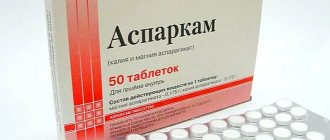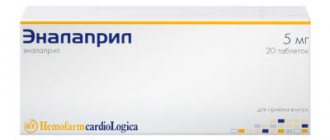Reasons when potassium is elevated in the blood
Firstly, potassium in large quantities can be found in the blood as a result of its release from cells into the bloodstream (hemolysis), which occurs constantly in a healthy body, but due to the occurrence of any pathological abnormalities in the body, cell destruction, and especially red blood cells, occurs on an increased scale, and therefore potassium is increased in the blood.
Secondly, potassium increases above normal due to impaired functioning of the kidneys, which are responsible for removing excess of this element from the body.
So, in fact, exceeding the norm of potassium per day in foods does not play a big role, because the kidneys quickly adapt, and the more potassium you consume, the more it is excreted from the body. But despite the fact that a diet with a high content of potassium in food is rarely an independent cause of hyperkalemia, it can aggravate the condition with other more serious abnormalities.
In addition, causes of high potassium in the blood may include the following:
- Recent childbirth;
- Injuries;
- Acute renal or liver failure;
- Surgical operations;
- Forced loss of fluid from the body (vomiting, diarrhea, frequent urination, increased sweating, etc.);
- Oxygen starvation of tissues;
- Large area burns;
- Alcohol poisoning;
- Diabetes;
- Tuberculosis;
- Autoimmune diseases;
- Addison's disease;
- Amyloidosis;
- Sickle cell anemia;
In addition to the listed factors, you can highlight the use of certain medications that help increase potassium in the blood. These include indomethacin, heparin, muscle relaxants, spironolactone, etc.
Much less often, the causes of high potassium in the blood are congenital. A disease such as familial hyperkalemic periodic paralysis is autosomal dominant. The patient periodically feels muscle weakness or an attack of immobility. This happens, for example, during active muscle activity. At the same time, it is not always possible to notice an excess of potassium in the body; it can only appear during attacks, and moments with a potassium deficiency or compliance with the norm are not uncommon.
Separately, it is worth mentioning pseudohyperkalemia. It is caused by the release of potassium from the cells into the bloodstream immediately at the time of blood sampling. This can happen if the provider does not follow the established venipuncture technique, for example, if the tourniquet is too tight or it is attached to the arm for too long. Another reason is thrombocytosis and leukocytosis, that is, potassium leaves the cells to form a blood clot. If the patient does not have clinical signs of hyperkalemia and there is no obvious reason to suspect this disease, the hypothesis of pseudohyperkalemia should be tested and the blood test repeated, possibly in a different laboratory.
Intense exercise is also a cause of increased potassium levels in the blood, but this phenomenon is temporary and soon, at rest, the potassium level stabilizes
Therefore, it is very important to properly prepare for donating blood and not exercise at least 12 hours before going to the laboratory.
Excess macronutrient
Excess of a microelement, as a rule, indicates existing diseases in the body. The reasons why potassium increases are varied, including:
- Acute renal failure.
- Loss of large amounts of fluid.
- Significant burns.
- Alcoholism.
- Increased glucose levels.
- Diabetes.
- Tuberculosis.
- Addison's disease.
- Lupus erythematosus.
- Liver failure.
Also in the potassium test there will be a high result during childbirth and certain diets.
You can suspect excess potassium in the body based on the following symptoms:
- Unexplained restlessness and anxiety.
- Feeling of goosebumps crawling on the skin.
- Muscle weakness.
- Numbness and paralysis.
- Heart rhythm disturbance.
- Breathing problems.
- Reducing the number of urinations.
It is important to know that cardiac arrest occurs when the concentration of potassium in the blood is 10 mmol/l. At the first symptoms of high potassium, immediately contact the clinic to get tested for potassium.
Excess potassium negatively affects heart function.
It is especially important to monitor potassium levels for people who have diseases of the urinary system. Also, patients with diabetes should closely monitor potassium and insulin in the blood. If you have chronic diseases that affect potassium levels, take responsibility for your health, get tested in a timely manner and follow all doctor’s recommendations.
Symptoms and signs of hyperkalemia
- Heart rhythm disturbances (bradycardia, arrhythmias) up to circulatory failure/cardiac arrest
- Muscle weakness, in rare cases to flaccid paresis and respiratory paralysis
- Paresthesia
- Weakened muscle reflexes.
- ECG: tall T waves, trough-shaped ST segment, widening of the QRS complex, AV block.
- Rhythm disturbances up to ventricular fibrillation.
- Muscle weakness, intestinal paresis.
The clinical picture depends on the degree and speed of development of hyperkalemia.
It is often asymptomatic.
Heart rhythm disturbances and cardiac arrest.
Symptoms of the disease that caused hyperkalemia.
Clinical manifestations of hyperkalemia include neuromuscular abnormalities and cardiac dysfunction. It should be noted that patients with hyperkalemia often complain of vague discomfort in the abdomen and poor health for unknown reasons. On the ECG they show pointed T waves, widened QRS complexes and asystole. Neuromuscular abnormalities include muscle weakness, constipation, and sometimes paralysis.
Norm
In order to effectively analyze the results obtained, it is necessary to rely on certain reference values accepted as the norm. For an adult, the normal level of potassium in the blood is 3.5-5.5 mmol/l.
Accordingly, if this indicator is less than the lower limit of normal, a lack of potassium in the blood is diagnosed, that is, hypokalemia; if, on the contrary, it is greater, then we are talking about an excess of potassium in the blood plasma, this is called hyperkalemia.
DETAILS: Creatinine is normal in women’s blood
The normal level of potassium in the blood varies depending on the patient’s age and is: for a child under 1 year old – from 4.1 to 5.3 mmol/l; at the age of 1 to 14 years – from 3.4 to 4.7 mmol/l; for adult men and women – from 3.5 to 5.5 mmol/l.
- long-term use of drugs with high potassium content;
- compression of the shoulder with a tourniquet;
- violation of the rules for storing the test material;
- high concentration of platelets and leukocytes in the blood;
- blood sampling for analysis after administration of drugs containing potassium;
- traumatic damage to a vein during analysis;
- constantly high level due to hereditary predisposition.
In the case of a true increase in potassium in the blood, the reasons are generally combined into two groups: insufficient excretion from the body due to disturbances in the functioning of the kidneys and increased excretion of potassium into the extracellular space due to the breakdown of proteins.
- renal failure and other kidney pathologies;
- metabolic disorders;
- uremia in the chronic form of the disease;
- dehydration of the body;
- extensive traumatic and burn tissue damage;
- hypoxia;
- hormonal imbalance;
- depressive disorders, neurasthenia, fatigue;
- pathologies with impaired urinary function;
- diabetic coma.
You can often hear the opinion that the level of potassium in a blood test is increased as a result of eating food with a high content of it, but such a deviation can only occur if the process of elimination from the body is disrupted.
Normally, the potassium content in the blood does not exceed 5.3 mmol/l. The main role in maintaining normal concentrations of this microelement belongs to a specific hormone - aldosterone. This hormone triggers physiological mechanisms that lead to the removal of excess potassium from the body along with urine. Let's look at the table of potassium norms in the body.
Blood potassium normal table
When hormonal levels change in the body, the normal course of all metabolic processes is disrupted, and the balance of microelements is also disrupted, which leads to a decrease in the excitability of cell membranes.
Increased potassium in the blood: symptoms
The beneficial properties of potassium mainly have a positive effect on the functioning of the heart and muscle tissue. Therefore, with the development of hyperkalemia, the main symptoms, of course, are associated with the deterioration of the functioning of these organs.
An increase in potassium levels in the blood in children and adults is accompanied by the following symptoms:
- Development of arrhythmia. This symptom indicates that potassium in the blood is higher than normal, as impulse generation is impaired;
- Muscle weakness, impaired sensitivity and motor function;
- The appearance of premature heart contractions;
- Depression of the respiratory center. As a result - a violation of the frequency of respiratory movements, the development of hypercapnia;
- Blood pressure disorders.
If your blood test shows elevated potassium, this will also affect the nervous system. A person whose blood potassium is elevated and higher than normal often feels the appearance of “goosebumps” on the body and becomes more restless.
It is especially important to monitor whether the child’s blood potassium is elevated. Since increased potassium in the blood in children may indicate the development of diabetes mellitus, kidney damage
Increased tearfulness, excitability, and the smell of acetone from orth are the main symptoms that potassium in the blood is higher than normal in children.
Note that increased potassium in the blood of a child or adult by several times can cause paralysis of the respiratory muscles and disruption of conduction along the nerve fibers of the heart. This can cause the heart muscle to stop.
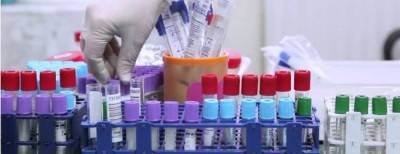
If you do not have the above symptoms, but the analysis shows a high content of potassium in the blood, then you should take the test again, and also seek qualified help from a doctor. Sometimes, squeezing blood vessels with your hand or storing blood for a long time in the laboratory can erroneously show elevated potassium in a blood test.
Treatment of hyperkalemia
If you have high potassium levels in your blood, treatment should begin immediately and only under the supervision of a qualified healthcare professional. First you need to conduct an accurate and complete diagnosis. To do this, you need to take a blood and urine test for potassium, determine the content of aldosterone and renin in the blood serum
It is also important to do an ECG. Since if potassium in the blood is increased, the electrocardiogram changes significantly
The P-R and QRS intervals become longer and a pointed T wave appears.
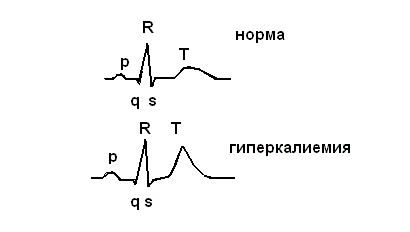
Treatment of hyperkalemia is carried out using several methods:
- Cancellation or reduction of dosage of drugs, supplements, vitamin complexes containing potassium;
- Intravenous administration of drugs that reduce the amount of potassium in the body. These can be preparations with calcium, a special resin. It is not absorbed in the digestive system, absorbing potassium, it removes it through the stomach;
- In some cases, injections of glucose and insulin are prescribed to help move potassium into the cells;
- Bleeding. Most often prescribed for chronic uremia;
- Hemodialysis is used for renal failure, since the kidneys cannot cope with their main function. Hemodialysis is a method of treating high levels of potassium in the blood, which is the artificial removal of waste products from the blood;
- Taking diuretics, diuretics. This is a fairly effective method of treating high potassium levels in the blood. The drugs are taken orally or intravenously.
If you have high blood potassium, diet is another method of treating hyperkalemia
It is important to limit the intake of potassium salts from food through the digestive tract. Therefore, you should change your diet, exclude from it legumes, dark chocolate, spinach, cabbage, fillets of marine fish, banana, kiwi, melon, grapes and citrus fruits
The maximum daily dose of potassium for hyperkalemia should be no more than 2 grams.
Potassium is one of the main electrolytes in the human body. It regulates the operation of buffer systems that prevent various negative consequences of changes in the internal environment. Together with magnesium, it controls the amount of water found in cells.
Healthy Eating Principle No. 3
Cook food properly to reduce potassium content
To view this video please enable JavaScript, and consider upgrading to a web browser that supports HTML5 video
Potassium is an essential nutrient. It plays a key role in the process of muscle contraction. However, do not forget that elevated levels of potassium in the blood can cause serious illnesses. Remember that the heart is also a muscle, and a large amount of potassium in the blood can pose a danger to its function.

Fine. But why should you be careful with your potassium intake?
One of the functions of the kidneys is to control the amount of potassium in your blood. If potassium levels are higher than normal, the kidneys remove it from the blood. If your kidneys are unable to perform this function properly, the level of potassium in your blood increases.
Although dialysis effectively removes excess potassium from your blood, it quickly accumulates in your body between dialysis sessions. Therefore, you should definitely monitor your diet and limit your potassium intake.
So what foods contain potassium?
The greatest difficulty in controlling potassium intake is that it is found in almost all living organisms. Therefore, all fruits and vegetables contain potassium. But there are certain differences. Thus, pasta and white rice have the lowest potassium content. But you still won't be able to completely eliminate potassium from your foods, so pay attention to how you prepare your food.
So how can I prepare my meals to minimize potassium as much as possible?
You will have to slightly change your usual way of preparing potatoes and vegetables - but it is not at all difficult, and you will quickly get used to it.
First of all, cut the vegetables or potatoes into cubes, cover them with warm water and leave for at least two hours. Then drain the water and cook the vegetables or potatoes, replacing the water again during the cooking process. This will allow you to remove most of the potassium from your foods. Do not use the water in which the ingredients were cooked to prepare other dishes or sauces.
Causes of hypokalemia
Hypokalemia is a dangerous phenomenon, especially over a long period of time. As noted above, it certainly leads to the malfunction of many internal systems and accompanying complications.
There are quite a few reasons for the development of hypokalemia, so it is important for every person to know about the basic ones. Perhaps such knowledge will help prevent such an unpleasant problem
Low potassium levels can be caused by both physiological and pathological reasons
In modern medicine, the causes of low potassium levels are divided into two groups, namely pathological and non-pathological. The first group of factors includes:
- severe vomiting or prolonged diarrhea, leading to the person losing fluid and naturally flushing out potassium
- Bartter's syndrome (a rare pathology associated with excessive secretion of liquid substances from the human body)
- Liddle's syndrome (a genetic abnormality involving the unnatural breakdown of potassium)
- problems in the digestive system affecting the absorption of substances from food
- diabetes
- increased levels of the hormone aldosterone (hyperaldosteronism)
- Cushing's syndrome (pathology of the pituitary gland, which disrupts the functioning of the endocrine system)
- the presence of severe burns, also leading to heavy fluid losses
Non-pathological causes of hypokalemia include:
- poor nutrition
- frequent and intense physical activity
- recent surgery
- taking many medications (most often diuretics, laxatives, antibiotics, penicillins, gentamicins, insulins)
- increased sweating
- pregnancy
- excessive intake of herbal teas and similar drinks
As practice shows, non-pathological factors extremely rarely provoke a decrease in blood potassium. Much more often the phenomenon is caused by pathologies of the body
Taking this into account, it is important to treat hypokalemia extremely responsibly, otherwise the risks of developing related problems are high.
Signs of pathology
Drowsiness, muscle weakness and pain, nausea, swelling are signs of hypokalemia
Hypokalemia is a disorder, so it always makes itself felt with certain symptoms. Depending on the severity of the existing disorders, the nature and severity of the symptoms is determined.
People suffering from hypokalemia often experience:
- phenomenon of permanent muscle weakness
- increased fatigue
- low level of performance
- chronic weakness
- periodic and causeless seizures
- heart rhythm problems
- increased flatulence
- excessive secretion of fluid from the body (frequent urge to go to the toilet, increased sweating, etc.)
With prolonged or severe hypokalemia, the development of:
- paralysis
- psychological disorders (from mild apathy to severe depression and hallucinations)
- serious problems with the digestive system
- respiratory dysfunction
- kidney failure
In all cases with low potassium levels, a drop in immunity is also diagnosed, which contributes to the development of ENT pathologies and allergies. Symptoms of this kind are not only unpleasant, but also dangerous, which is why it is undesirable to ignore them. At a minimum, it is necessary to be examined at a clinic and determine the nature of the existing problems. If possible, start getting rid of them.
Is a decrease in potassium dangerous for the heart and blood vessels?
Hypokalemia causes disruption of sulfur rhythm
The danger of hypokalemia should not be underestimated. Since a low level of potassium leads to impaired functioning of the body at the cellular level and loss of fluid, its presence is always dangerous and can provoke a number of irreversible consequences.
Among the most common complications of the disease, we highlight:
- paresis and paralysis of the legs
- serious problems with the respiratory system (up to asphyxia due to lung failure);
- damage to the heart and blood vessels
- renal failure
Naturally, the development of such complications does not always occur. The development of these can occur with severe and prolonged potassium deficiency. Under other circumstances, such serious consequences are practically excluded.
Potassium deficiency can provoke both minor damage to the heart or vascular structures, and pathologies that are most dangerous for them. For example, the development of ventricular fibrillation or flutter cannot be ruled out.
Daily requirement
Typically, an adult needs to get one to two grams of the mineral potassium per day.
For a young and growing organism, this component is required in an amount of at least thirty milligrams per kilogram of body weight. Most often in winter, the level of potassium in the blood is elevated. There may be many reasons for this, but it should be noted that this mineral does not accumulate in the body, so most often this problem occurs due to improper structure of the daily diet.
Treatment of hyperkalemia
Treatment of hyperkalemia should be aimed at normalizing blood potassium levels and eliminating symptoms caused by hyperkalemia.
With a slight increase in potassium levels, up to 6 mmol/l, it will be sufficient to discontinue drugs that increase potassium levels (for example, beta-blockers, potassium-sparing diuretics, ACE inhibitors and others).
Also effective in this case will be a diet for hyperkalemia, which includes limiting foods high in potassium compounds.
The use of laxatives and various enemas is also effective to accelerate the excretion of potassium in feces through the gastrointestinal tract. In such a situation, it is appropriate to choose Sorbitol (polystyrene sulfonate) as the drug of choice. With its help, so-called cation exchange therapy is carried out, which, unfortunately, is not so effective in reducing the concentration of potassium ions in the plasma, with advanced cascades of pathogenetic processes, in more severe cases.
It is also appropriate to add a loop diuretic to the patient's treatment regimen, provided that renal function is not critically impaired, and thereby increase potassium excretion through the kidneys.
If hyperkalemia is more pronounced and the potassium level exceeds 6 mmol/l, then decisive action and a set of measures aimed at reducing the intake of potassium into the body and its immediate removal from the blood plasma are necessary.
To effectively reduce the level of potassium in the plasma, you need to act in two directions - to promote its movement into cells and its removal out of the body.
When heart rhythm disturbances occur, use a 10% solution of calcium gluconate, inject it intravenously 10-20 ml over 15-20 minutes
It should be used with caution if the patient has recently taken cardiac glycosides (digitalis preparations). Calcium gluconate improves electrocardiogram parameters, but does not reduce the concentration of potassium in the blood, and therefore has no etiotropic effect
In case of acidosis, under the control of blood pH, sodium bicarbonate (sodium bicarbonate) is administered intravenously at a dose of 44 mEq. For the same purposes, calcium chloride is sometimes administered if a central venous catheter is installed, since calcium chloride has a strong irritating effect and can cause inflammation of the walls of blood vessels (phlebitis) and surrounding tissues.
To directly reduce the concentration of potassium in the plasma, by moving it inside the cells, intravenous drip administration of glucose is used - a solution of 40%, 200-300 ml, and insulin, at the rate of 1 unit for every 3 g of glucose, for 30 minutes. If there is an emergency, then an additional intravenous injection of insulin is administered - 15 units, in place with a 40% glucose solution, 10 ml.
The use of potassium-sparing diuretics, such as Bumetanide, Furosemide, is appropriate only in patients with preserved renal excretory function. In case of aldosterone deficiency, it is appropriate to administer its synthetic precursors - Fluorohydrocortisone or Deoxycorticosterone acetate.
According to some data, plasma potassium levels may also decrease due to the administration of beta-agonists, for example, Albuterol. It should be inhaled using an inhaler for 10 minutes, with a dose of 5 mg/ml.
Extracorporeal purification methods are invaluable, especially in cases of severe renal failure. Hemodialysis demonstrates maximum effectiveness for hyperkalemia. With its help, it is possible, in one four-hour session, to reduce the level of potassium in plasma by 40-50%. It is possible to use other extracorporeal methods, for example, peritoneal dialysis, but its effectiveness is much lower.
After the patient’s condition has been stabilized and emergency measures have been completed, further maintenance of homeostasis can begin and prevent the re-development of hyperkalemia.
For further maintenance therapy, it is appropriate to use any of the following therapeutic measures. It is recommended to take drugs that are synthetic analogues of Aldosterone. Also, potassium-sparing diuretics – Bumetamide, Furosemide – help prevent the further development of hyperkalemia. In addition, cation exchange resins are used for maintenance therapy, which help bind potassium in the gastrointestinal tract.
Treatment of pathology
Remember, this is a fairly serious condition if the patient has elevated potassium in the blood. Only a specialist can adequately interpret the causes and treatment of the disease.
In addition, severe hyperkalemia can lead, as mentioned above, to dangerous conditions for a person: respiratory or cardiac arrest. That is why treatment begins as soon as the patient is diagnosed.
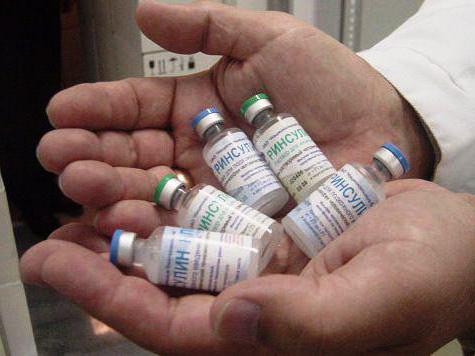
View gallery
Therapy includes the following activities:
- Intravenous administration of potassium antagonists. Strictly monitoring cardiac activity, the doctor prescribes Calcium Gluconate.
- Redistribution of the cation inside the cells. As a result, its concentration in the blood decreases. For such purposes, drugs are administered intravenously: “Insulin” and “Glucose”.
- Ensuring normal excretion of potassium from the body in the urine. Thiazide diuretics, such as the drug Furosemide, are recommended.
- Dialysis. The blood is purified using a special device. Such an event is prescribed for severe cases of the disease.
- Laxatives, ion exchange resins. These drugs are aimed at retaining the cation in the intestines and removing it with feces.
- Betta mimetics. The drug "Salbutamol" stimulates the movement of potassium into cells.
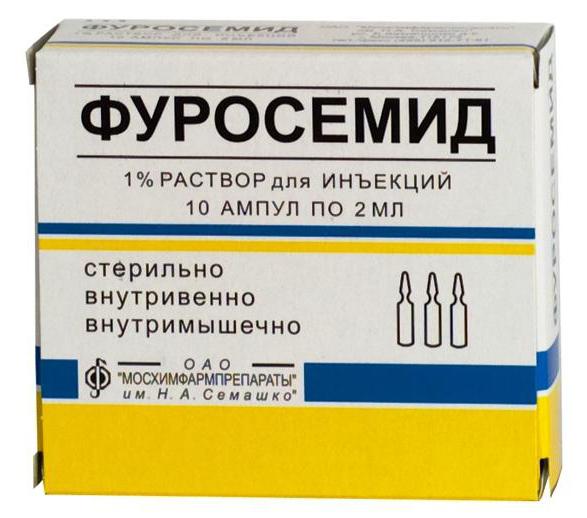
View gallery
Causes of hyperkalemia
In people suffering from chronic renal failure, as a result of decreased renal secretion, potassium removal through the gastrointestinal tract increases. In such individuals, hyperkalemia is common.
You will have to give up bananas...
Causes of hyperkalemia include:
- excessive intake of potassium in the diet in patients with renal failure;
- disorders of potassium excretion through the kidneys;
- disruption of intracellular potassium transport;
- massive release of potassium from damaged cells, crash syndrome;
- water-electrolyte imbalance;
- intense protein catabolism;
- tissue hypoxia;
- hemolysis.
The most common form of the disease is drug-induced hyperkalemia, caused by medications that affect the renin-angiotensin-aldosterone system. Typically, these drugs are widely used in the treatment of hypertension, they block sodium channels in the kidneys.
Drug-induced hyperkalemia can also result from interruption of renin production through the use of ACE inhibitors, angiotensin receptor blockers, or nonsteroidal anti-inflammatory drugs.
Sometimes an increase in potassium levels in the blood can occur as a result of the use of potassium-sparing diuretics, such as spironolactone.
An increase in the concentration of potassium ions in the blood is also promoted by: dehydration, strychnine intoxication, treatment with cytostatic agents, hypofunction of the adrenal cortex (Addison's disease), hypoaldosteronism, constant hypoglycemia or metabolic acidosis.
Top 9 Potassium Rich Foods
There are many more foods that increase potassium levels in the blood than you might think. However, there are usually nine most popular foods that are mandatory for people with Kalium deficiency in the blood.
Potato
Perhaps many people know that potatoes are a storehouse of potassium. To whom in childhood did not parents offer potatoes “in their jacket” with the words “they have a lot of potassium?”
One small potato contains an average of 950-1000 mg of potassium, which is almost 1/6 of the daily requirement for an adult. In addition, potatoes contain starch, carbohydrates, vitamin C and B6, fiber and iron.
Dried apricots
Dried apricots, beloved by many, are not only a satisfying snack, but also a rich source of vitamins and beneficial microelements. Per 100 grams of dried apricots there is about 1,170 mg of potassium, which is rarely found in other foods.
Active elements, of course, are also contained in fresh apricots, but in the dried version the concentration increases significantly. So if you don’t know what to take as a snack to work or school, then dried apricots will be an excellent and healthy choice.
Pumpkin
Surely the heroes of JK Rowling's Harry Potter books did not have problems with potassium in the blood, since pumpkin was a popular food product for them. Almost all varieties of pumpkins contain a large amount of Kalium (100 grams of a winter variety contains about 450 mg of the substance, and 100 grams of an acorn variety contains about 440 mg).
Potassium and its biological role
Potassium is a mineral salt involved in various physiological processes in the body.
Along with calcium and sodium, potassium has several important functions, including:
- Maintains the electrical membrane potential of cells necessary for the conduction of nerve impulses and muscle contraction;
- Inside cells, it regulates acid-base balance (i.e. pH) and osmotic pressure;
- Promotes the action of enzymes involved in cellular metabolism;
- Helps maintain;
- Participate in maintaining normal blood pressure, mitigating the effects of sodium;
In the body, at rest, most potassium is found intracellularly (while sodium and calcium are predominantly extracellular).
Intracellular potassium concentrations are maintained by an active transport system (called the sodium-potassium pump), which transports sodium outside the membrane, causing potassium to be re-entered.
Potassium is supplied to the body through food, but to maintain its levels within normal limits, the body can resort to reserves of the element located inside the cells, depending on the needs of organs and tissues.
In any case, the body is not able to produce potassium on its own; for this reason it is recommended to regulate consumption. In this case, the kidneys will intervene if it is necessary to increase the excretion or reabsorption of the element.
The role of potassium
- Copes with the regulation of acid-base balance in the blood and intercellular fluid, osmotic pressure and water-salt balance.
- Helps transmit nerve impulses.
- Activates certain enzymes of protein and carbohydrate metabolism.
- Provides correct and accurate heart rhythm.
- Synthesizes protein and then converts it into glucose glycogen.
- Helps normal kidney function.
- Improves intestinal motility.
- Maintains optimal pressure.
Taking all this into account, it is necessary to understand what the hidden causes of high potassium in the blood are and what this condition is fraught with for the human body.
What provokes / Causes of Hyperkalemia:
Hyperkalemia occurs as a result of the release of potassium from cells or impaired potassium excretion by the kidneys. Increased potassium intake is rarely the sole cause of hyperkalemia, since its excretion rapidly increases due to adaptive mechanisms.
Iatrogenic hyperkalemia occurs as a result of excessive parenteral potassium administration, especially in patients with chronic renal failure.
Pseudohyperkalemia is caused by the release of potassium from cells during blood collection. It is observed when the venipuncture technique is violated (if the tourniquet is tightened too long), hemolysis, leukocytosis, thrombocytosis. In the last two cases, potassium leaves the cells when a blood clot forms. Pseudohyperkalemia should be suspected if the patient has no clinical manifestations of hyperkalemia and there are no reasons for its development. Moreover, if blood is taken correctly and the potassium concentration is measured in plasma, and not in serum, this concentration should be normal.
The release of potassium from cells is observed with hemolysis, tumor collapse syndrome, rhabdomyolysis, metabolic acidosis due to intracellular uptake of hydrogen ions (except in cases of accumulation of organic anions), insulin deficiency and plasma hyperosmolality (for example, with hyperglycemia), treatment with beta-blockers (occurs rarely, but may contribute to hyperkalemia due to other factors), the use of depolarizing muscle relaxants, such as suxamethonium chloride (especially in trauma, burns, neuromuscular diseases).
Physical activity causes transient hyperkalemia, which may be followed by hypokalemia.
A rare cause of hyperkalemia is familial hyperkalemic periodic paralysis. This autosomal dominant disease is caused by a single amino acid substitution in the sodium channel protein of striated muscle fibers. The disease is characterized by attacks of muscle weakness or paralysis that occur in situations that promote the development of hyperkalemia (for example, during physical activity).
Hyperkalemia is also observed in severe glycoside intoxication due to suppression of Na+,K+-ATPase activity.
Chronic hyperkalemia is almost always caused by a decrease in potassium excretion by the kidneys as a result of either a violation of the mechanisms of its secretion or a decrease in the flow of fluid into the distal nephron. The latter cause rarely leads to hyperkalemia on its own, but can contribute to its development in patients with protein deficiency (due to decreased urea excretion) and hypovolemia (due to reduced supply of sodium and chlorine ions to the distal nephron).
Impaired secretion of potassium ions occurs as a result of a decrease in the reabsorption of sodium ions or an increase in the reabsorption of chlorine ions. Both lead to a decrease in transepithelial potential in the cortical collecting duct.
Trimethoprim and pentamidine also reduce potassium secretion by reducing sodium reabsorption in the distal nephron. Perhaps it is the action of these drugs that explains the hyperkalemia that often occurs during the treatment of Pneumocystis pneumonia in patients with AIDS.
Hyperkalemia is often observed in oliguric acute renal failure due to increased cellular potassium release (due to acidosis and increased catabolism) and impaired potassium excretion.
In chronic renal failure, an increase in fluid flow into the distal nephrons, up to a certain time, compensates for the decrease in the number of nephrons. However, when GFR becomes less than 10.15 ml/min, hyperkalemia occurs.
Undiagnosed urinary tract obstruction is often the cause of hyperkalemia.
Impaired potassium excretion is also accompanied by drug nephritis, lupus nephritis, sickle cell anemia, and diabetic nephropathy.
Causes of high potassium concentration in the body

physical activity is a possible cause of physiological hyperkalemia
The reasons for an increase in the level of potassium in the blood serum, excluding intense physical activity, which gives transient hyperkalemia, are usually diseases, of which there are many:
- Severe injuries.
- Necrosis.
- Intracellular and intravascular hemolysis, which normally occurs constantly, as red blood cells “age” and are destroyed, however, in the case of many pathological conditions of an infectious, toxic, autoimmune, traumatic nature, the breakdown of red blood cells occurs faster, and there is a lot of potassium in the blood.
- Starvation.
- Burns.
- Tumor disintegration;
- Surgical interventions.
- Shock (the addition of metabolic acidosis significantly aggravates its course).
- Oxygen starvation of tissues.
- Metabolic acidosis.
- Lack of insulin in hyperglycemia.
- Increased breakdown of proteins or glycogen.
- Increased permeability of outer cell membranes, allowing potassium to leave the cell (in anaphylactic shock).
- Reduced excretion of potassium ions by the excretory system (kidney damage - acute renal failure and chronic renal failure, decreased diuresis - oliguria and anuria).
- Hormonal disorders (impaired functional abilities of the adrenal cortex);
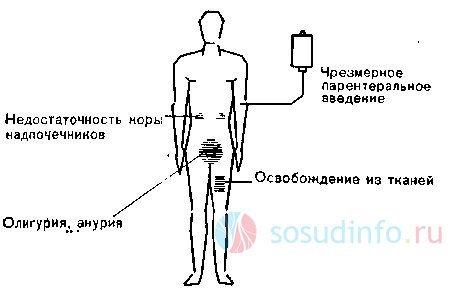
- Excessive administration of potassium-containing drugs causes iatrogenic hyperkalemia, which occurs more often in patients with chronic renal failure.
- Treatment with certain medications (indomethacin, potassium-sparing diuretics, captopril, muscle relaxants).
- Dehydration due to polyuria.
- Severe
glycoside intoxication, when the activity of K + -, Na + -Adenosine triphosphatase is suppressed. - Lupus nephritis or caused by the use of certain medications, diabetic nephropathy, certain types of anemia.
- Massive blood transfusions, transfusion of old blood with the development of potassium intoxication.
- Familial periodic hyperkalemic paralysis, transmitted in an autosomal dominant manner, is itself a rare phenomenon, so it is not often found among the causes of increased potassium levels in the blood. An excess of this element is observed only during attacks (and even then not always, sometimes, on the contrary, K + is reduced or normal). Signs that there is too much potassium in the blood include paralysis and muscle weakness, which can be triggered by intense physical stress or another situation that leads to an electrolyte imbalance.
Thus, excess potassium in the body is caused either by cell breakdown , causing excessive release of potassium from them, or by a decrease in potassium excretion by the kidneys in any renal pathology, or (to a lesser extent) for other reasons (administration of potassium preparations, taking medications, etc.) .
Prevention

To avoid the need to use drug therapy, various procedures and interventions in the body, it is recommended to regularly carry out preventive measures. The disease is less likely to occur if the correct diet is developed. Such a diet should contain foods that include low amounts of the mineral.
It is recommended to eat blueberries, asparagus, pineapples, carrots, grapes, blackberries, cranberries, lemon, celery, rice, pasta, milk, beets, cottage cheese, raisins, pumpkin seeds, chocolate, almonds and many other healthy ingredients. Proper nutrition is very important for a child, since such deviations can affect his physical and mental development.
For the normal functioning of the heart and cardiovascular system, a microelement such as potassium is vital. Potassium deficiency can occur in people of all ages, but most often people aged 50 years and older face the problem of a lack of this substance.
Many doctors immediately advise taking medications or dietary supplements containing potassium, but not everyone is ready to load their body with pills, even if they are relatively safe.
It will be useful for such people to find out what foods contain potassium in order to be able to compensate for the deficiency of the substance naturally.
This article is based on the Potassium Intake Guidelines for Adults and Children.
, which was released by the World Health Organization (WHO) in 2012, the full text of which you can read.
Treatment
In case of hypokalemia, the cause of the disease should first be identified; if there is a slight deficiency of the substance, it is enough to adjust the diet. The macronutrient is included in the following products:
- vegetables (beets, cabbage, pumpkin, radish);
- cereals (wheat, buckwheat, oatmeal);
- fruits, berries (apricots, watermelon, grapes);
- greens (dill, parsley, spinach).
Potassium is also found in tea, coffee, dried fruits, fish, and seafood. It is recommended to consume vegetables baked, since frying loses many useful substances; decoctions are also recommended for consumption.
Treatment for low potassium
With mild potassium deficiency, it can be increased through nutrition. Honey, dried fruits, nuts, seeds and legumes are recommended. The basis of the diet should be fresh vegetables, fruits and herbs. It is important to consume less table salt (up to 5 g per day).
For moderate potassium deficiency, tablets are prescribed: Kalipoz prolongatum, Caldium or Panangin. In severe cases, intravenous administration of potassium and magnesium solutions and blood plasma transfusion are necessary.
We recommend reading the article on hypokalemia. From it you will learn about the causes and symptoms of an acute condition, correction in adults and children, treatment with drugs and possible consequences.
Learn more about potassium and magnesium for the heart.
Potassium in the blood reflects the balance of electrolytes, acid-base balance. It is responsible for transmitting nerve impulses and contracting muscles (skeletal and cardiac). Analysis is needed for injuries, dehydration, treatment with hormones, diuretics, and cardiac glycosides. It is prescribed for kidney diseases, hormonal disorders, arrhythmias along with sodium, magnesium and chlorine.
The increase is caused by diseases of the kidneys, adrenal glands, and extensive tissue damage. Potassium loss is possible through vomiting, diarrhea, in the urine; its level in the blood decreases and when it passes into cells. The consequence of an excess can be cardiac arrest, and with a shortage, severe muscle weakness, respiratory and heart failure appears.
Daily requirement of potassium for humans: how much should enter the body
The daily intake of potassium for women and men is 2-3.5 g per day. When playing sports, intense sweating, in old age, while taking diuretics, it should be increased to 4.7 g. For children, the optimal amount is calculated per 1 kg of body weight and is 20-30 mg/kg.
It is recommended to monitor the intake of potassium in the body, since it has been proven that sufficient content in food reduces high blood pressure, prevents circulatory disorders in the heart (heart attack) and brain (stroke), and inhibits the progression of atherosclerosis.
The required amount of potassium per day can be obtained from vegetables and fruits. Richest in it:
- avocado,
- dried fruits,
- beans,
- soybean,
- peas,
- nuts,
- fresh greens,
- mushrooms,
- tomatoes,
- tomato paste,
- cabbage,
- potato,
- beet.

